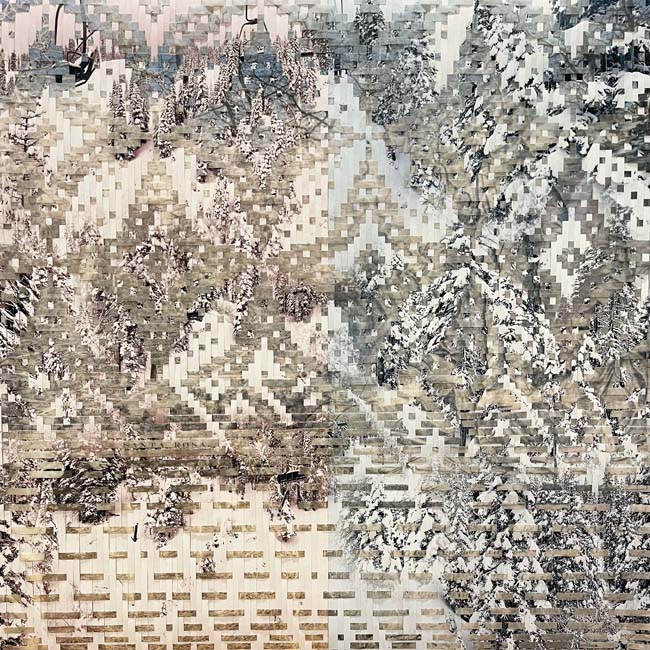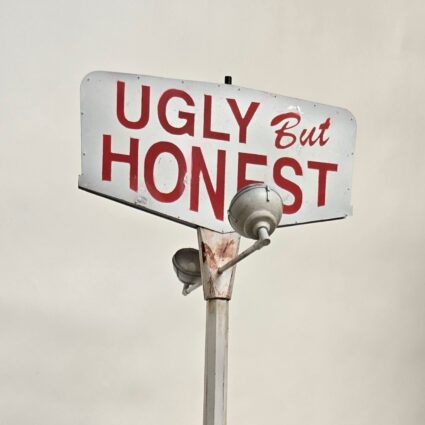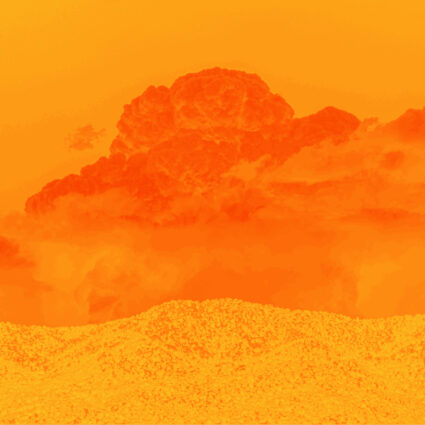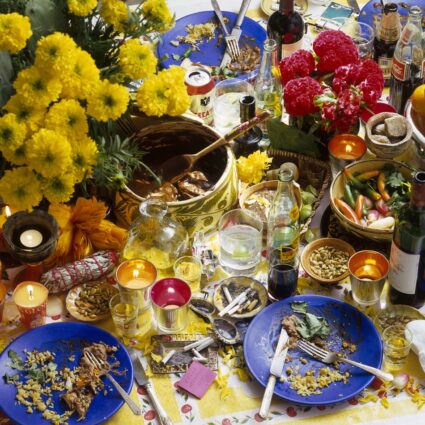The group exhibition Entanglements looks at the many ways humans impact the environment, revealing a tangled and often fraught web of relationships with nature.
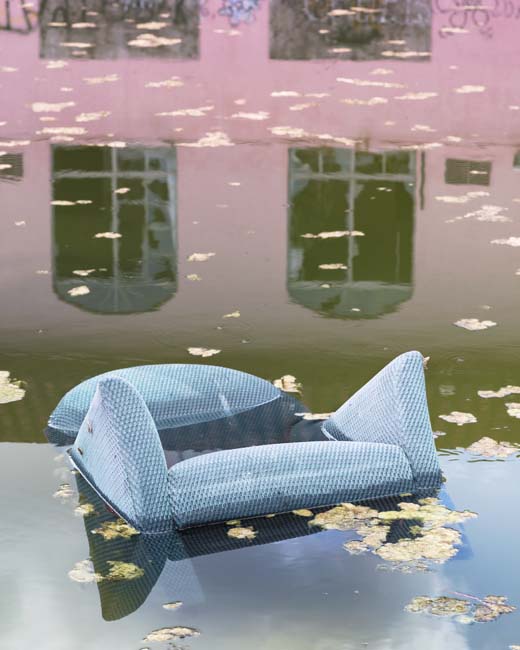
Entanglements
January 13–March 25, 2023
Center for Visual Art, Denver
Whether we look at it microscopically or with a sweeping aerial view, the natural world around us pulsates with complexity and unpredictability, operating under a tenuous exchange with humans. We take from it, and it takes from us. We rob Earth’s resources, and in turn our quality of life suffers. Entanglements immerses us in environmental themes in the hope we recognize Earth as a chaotic web of powerful and fragile relationships.
First, there is the microscopic view, for example, in Texas artist Dornith Doherty’s Atlas of the Invisible series (2019-21). Using a scanning electron microscope, Doherty blows up images of feathers, ferns, and other delicate matter to reveal the airborne particles surrounding them. Her point is that we have ignored the minutest elements of Earth, entangling our ecosystem in haze, if not air pollution. In the ethereal Mote, particles hover above a cluster of bird feathers.
Second, there is the sweeping aerial view, seen most emphatically in Establishing Eden (2016), a mesmerizing ten-minute video by the Dutch duo of Persijn Broersen and Margit Lukács. With the pristine wilderness of New Zealand providing the scenery, the artists digitally interweave flattened views of mountains, canyons, forest, and rivers, letting the images fold in on each other against dramatic classical music. The concept of Eden thus, in filmmaking lingo, becomes just a series of establishing shots, and we are entangled in Eden’s elusiveness.
Entanglements widens its scope even more with photo-based works and installations addressing climate change and resulting flooding, the dumping of hazardous wastes, the conflict between nature and manmade interferences, and our general disrespect for the Earth.
Viewers will certainly gravitate toward the four new works by rising star Sarah Sense (Chitimacha/Choctaw), who turns strips of archival materials referencing the development of the West into two-dimensional reproductions of Native basket-weaving, as a form of decolonizing her heritage. The works hold a mirror to America’s relationship to the environment and our penchant for raiding Earth’s resources since the age of Manifest Destiny.
